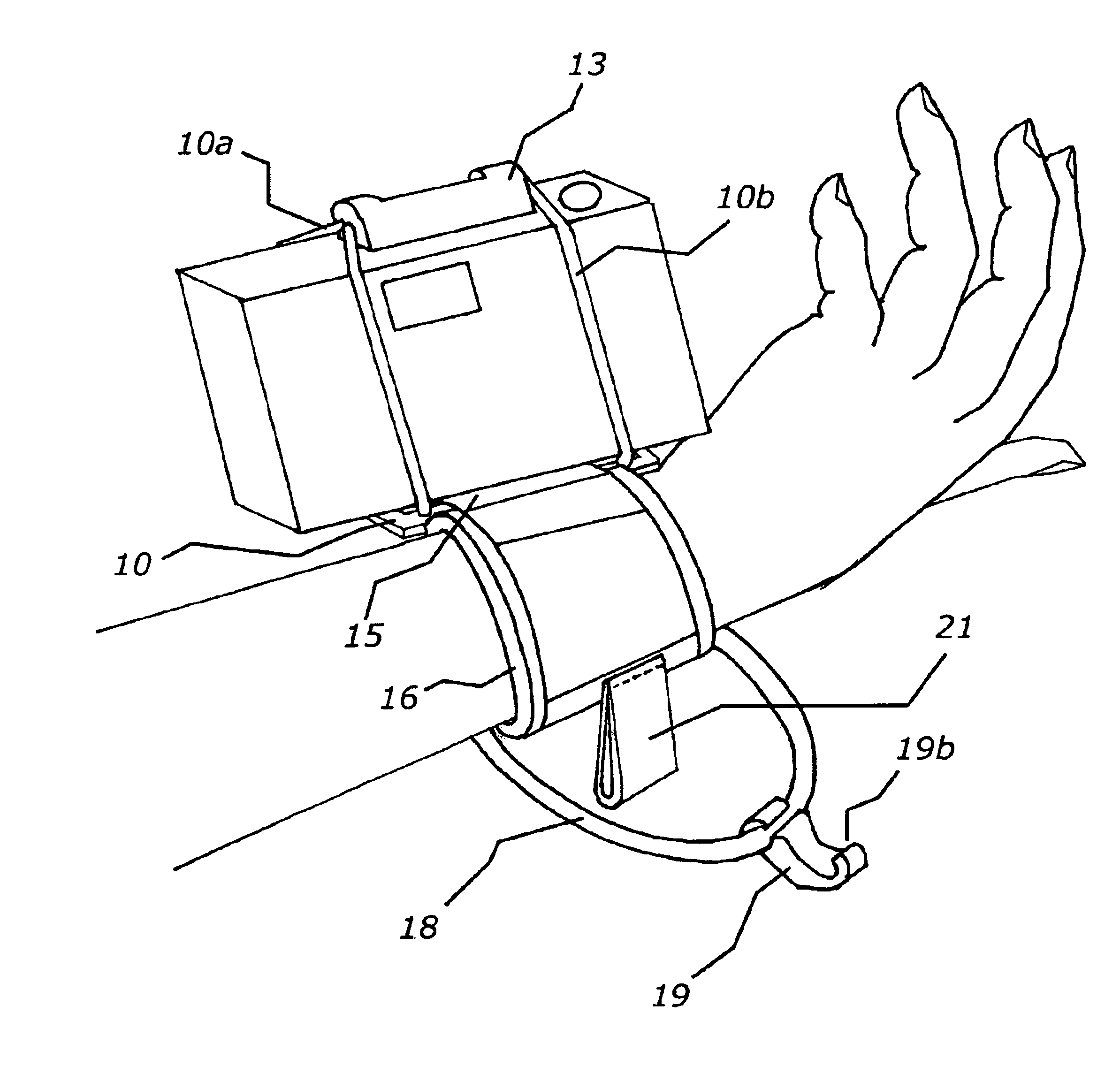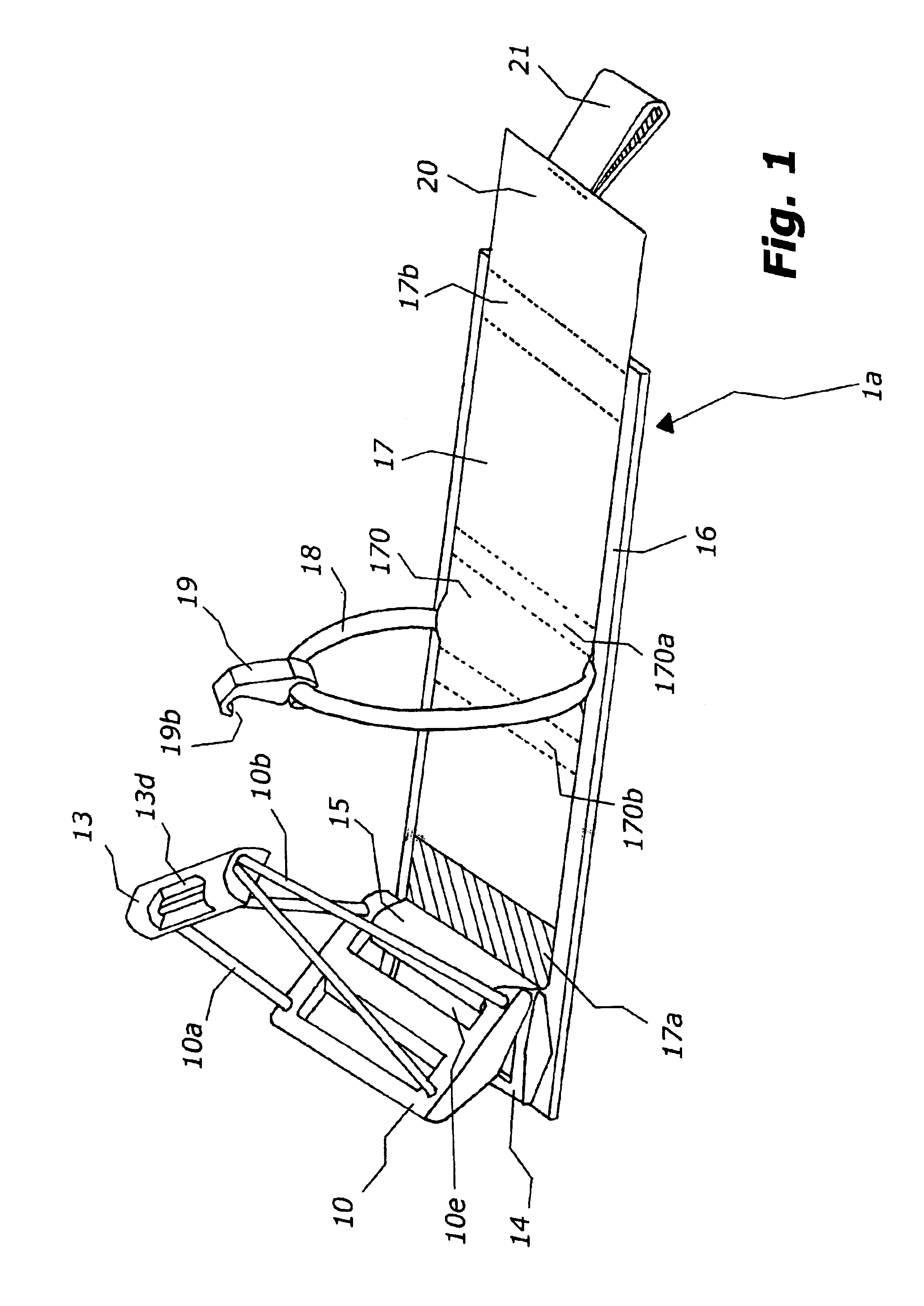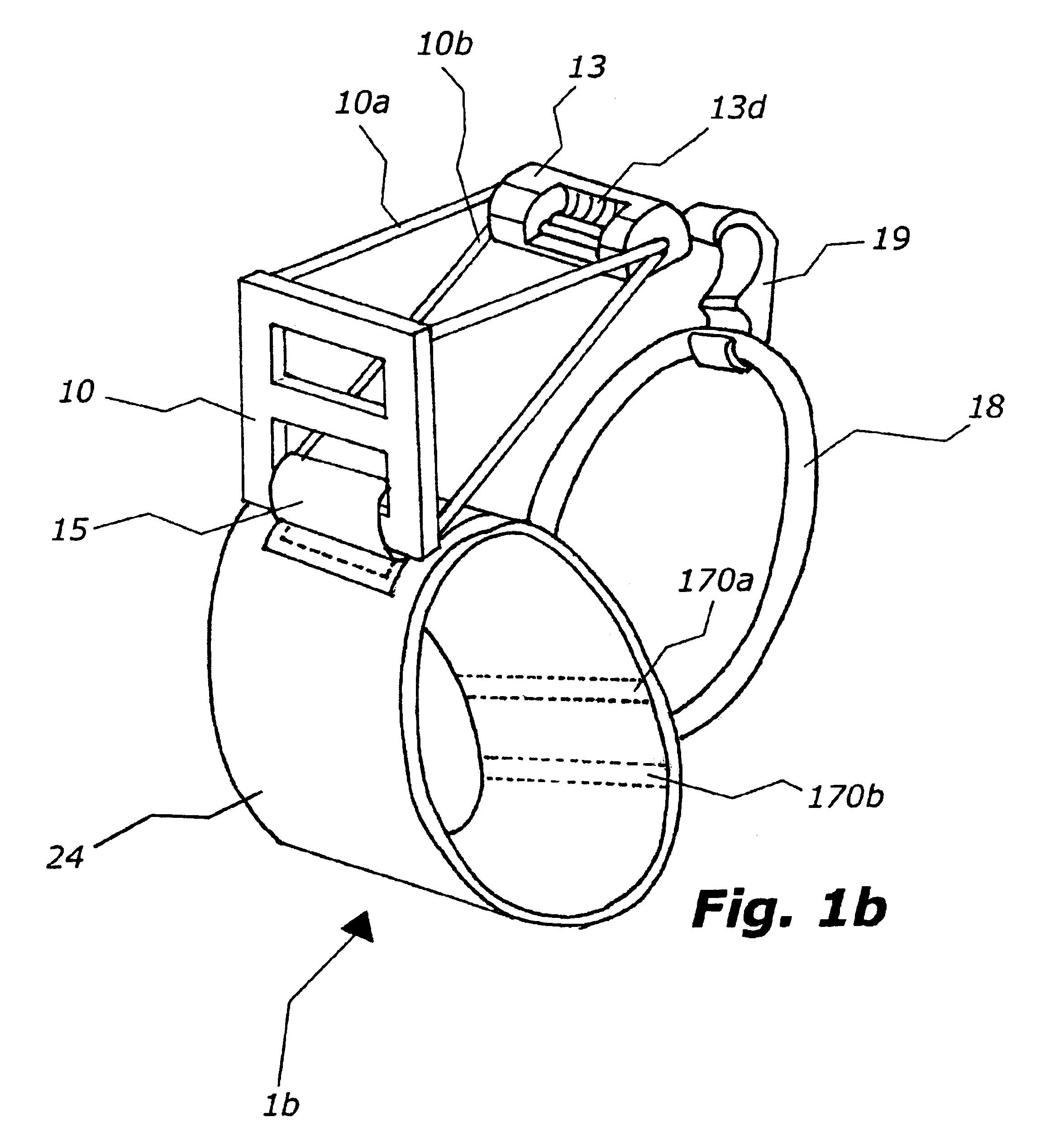Harness system for attaching camera to user
a camera and user technology, applied in the field of harness systems, can solve the problems of affecting the safety of users, so as to improve reliability, reduce manufacturing costs, and improve reliability. the effect of durability
- Summary
- Abstract
- Description
- Claims
- Application Information
AI Technical Summary
Benefits of technology
Problems solved by technology
Method used
Image
Examples
Embodiment Construction
[0068]The present invention includes a camera harness and improved camera body and improved camera housing to secure a camera in a first secure position to a user while the camera is not in use and allowing for pivotably moving the camera into a picture-taking position to take a picture while remaining secured to the camera harness in a second secure position. Further, the present invention allows for quickly returning the camera to the first secure position once the user completes taking the picture. Further still, the present invention includes and allows for alternative camera harnesses or straps to be attached to the improved camera body and or improved camera housing to secure a camera to a user in a fixed first secure position.
General Structural Configuration
[0069]FIG. 1 is a perspective view of the harness 1a in an open and extended position, revealing all of its parts in full view. The length and main body of harness 1a is made up of two lengths of hook and loop material, lo...
PUM
 Login to View More
Login to View More Abstract
Description
Claims
Application Information
 Login to View More
Login to View More - R&D
- Intellectual Property
- Life Sciences
- Materials
- Tech Scout
- Unparalleled Data Quality
- Higher Quality Content
- 60% Fewer Hallucinations
Browse by: Latest US Patents, China's latest patents, Technical Efficacy Thesaurus, Application Domain, Technology Topic, Popular Technical Reports.
© 2025 PatSnap. All rights reserved.Legal|Privacy policy|Modern Slavery Act Transparency Statement|Sitemap|About US| Contact US: help@patsnap.com



